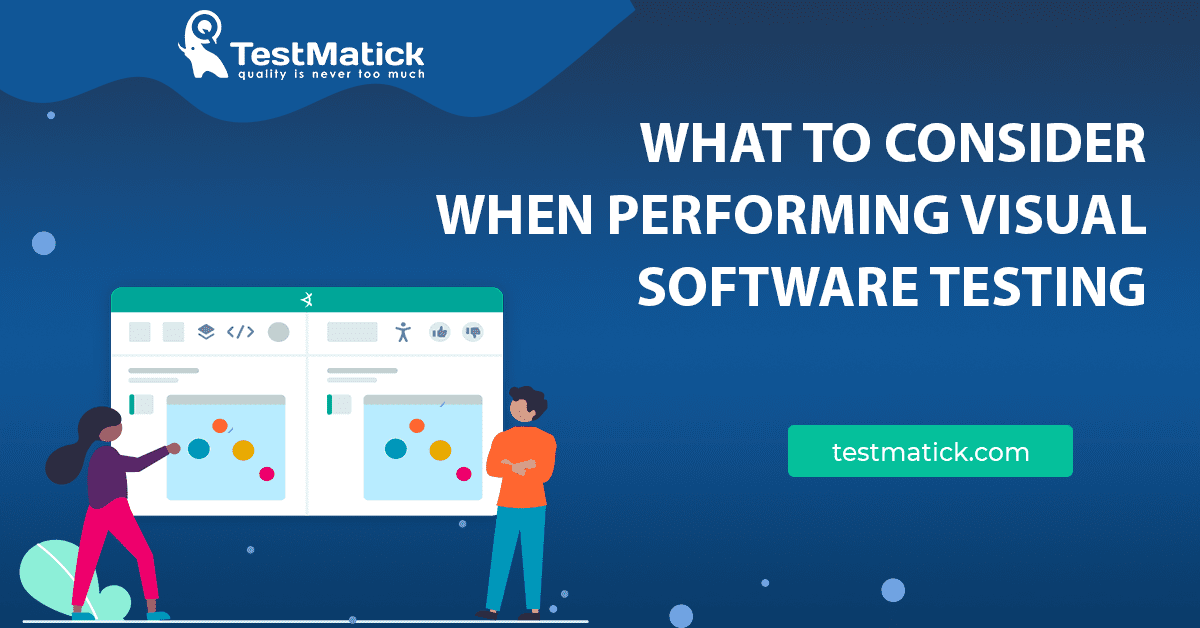If you have to check a front-end software – whether it’s a website or a mobile application – it’s visual testing that can be a fundamental aid to building the right test strategy.
This material is a small guide of what you can and should implement during visual testing on projects.
Choose the Right Tool
Before you start testing, you need to outline the best tools for your tasks. There are many different plugins and add-ons for visual testing that integrate directly into your testing environment or into the framework you are using.
These can be paid plugins like Applitools, Percy, Happo, and Chromatic as well as open-source libraries such as AyeSpy, BackstopJS, Wraith, etc.
Any of the tools you choose should be carefully analyzed to operate solely with the right one for your work requirements.
Choose the Component or Full-Page View for Visual Tests
It is generally accepted to separate visual testing as a set of components or full-page analysis. Component test sets focus on the individual features of the product under test, while full-page tests analyze only the area that is accessible to the user.
You need to understand whether your test strategy will support these types of tests or not. Given the type of system you are testing, component tests can be in high demand when it comes to the entire design system. On the other hand, full-page checks are important for pages with very large browsing schedules.
Web Browser Support
There is no way to do this without cross-browser testing. The front-end development now makes it possible to transfer the code to different browsers without noticeable functional differences but the visual display of elements can still be different.
Your test strategy should contain practical solutions as to which browsers should support product performance.
Test Support
Maintaining worktable tests is an activity that is sometimes skipped. Once visual tests are created, you need to make sure that they are supported correctly when the application database is refactored or parts of it are changed. Who, from the customers’ side, should support such a test? The development team or the QA lab? Then you must make sure that the visual testing toolkit is correctly integrated into all the development processes used and that programmers can create diverse sets of visual tests on their own.
Working With Reference Elements
Visual testing is when you compare the finished product with reference images that are the source of truth (what the product being developed should be).
It’s worth thinking about how exactly you will store them. Using paid plugins means uploading files to servers, and if you work with free services, you should think about how you will share the reference files with the rest of the team.
Interaction With Dynamic Information
To avoid a large set of false positives and test failures, you need to think about what to do with dynamic information. A lot of visual testing plugins use pixel-by-pixel comparison algorithms, and you need to ensure that the page you’re examining is as clean of dynamic data as possible.
Time Limits and Budget Limits
Do you have time and budget constraints on the work you do? You must analyze the pros and cons of each tool and understand whether it will benefit you, compared to others, or not. This is extremely important when evaluating paid visual testing software.
If possible, do a budget projection for the future. Also, estimate the time and potential conditions for integrating any tools into your testing environment.
Conclusion
As we can see from all the above, choosing the right visual testing tools requires considering a large list of various factors. Each software has both pros and cons. Try to choose the one that suits your work best.
Don’t take the first tool that comes along without making sure that it will be useful to you. Don’t be afraid to use the method of trial and error – experiment with different applications to find what you need.










Leave A Comment